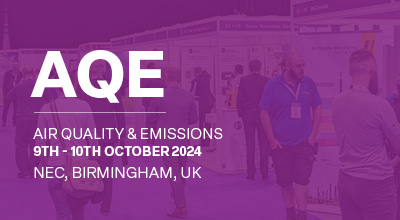| Abstract Title: | Automatic temperature and humidity compensation of NO2 low-cost sensors in complex environments |
| Presenter Name: | Dr Edurne Ibarrola-Ulzurrun |
| Co-authors/Co-presenters: | Mr Asier Galech Mr Javier Fernandez-Huerta |
| Company/Organisation: | Kunak Technologies |
| Country: | Spain |
Abstract Information :
Electrochemical sensors suffer from a non-linear effect on temperature and humidity. In the last years, several studies have applied different techniques to mitigate these effects in electrochemical sensors, most of them based on Machine Learning and Artificial Integillece methodologies, proposing a calibration before any deployment in field against reference data and every specific period to maintain this calibration over time, when environmental conditions changes, and to avoid the drift suffered by the sensors. However, these models have several disadvantages:rn• They always required reference data.rn• A large amount of data is needed for calibration (training and testing).rn• Valid for specific cases. Complex to use the same model under other conditions and with other data.rn• Need to calibrate every 3 months, to update the model to the new environmental conditions from season to season.rnIn this context, most of the studies have shown very good data accuracy and results when testing the sensors during wintertime. The main reasons are that the concentration of pollutants is higher, so this leads to higher R2, which is a common metric used to prove the performance of the sensors, and due to cold temperatures which have less effect on the sensors.rnHowever, it is more difficult to find accurate data results and field studies at high temperatures (>25ºC) with fast humidity changes, typically found in summertime or tropical areas. This condition affects all electrochemical sensors, but more significantly to NO2 and SO2 sensors when low concentrations of these pollutants are monitored. Thus, higher errors are expected, because the sensor either overestimates or underestimates the pollutant concentration, and this error in a few ppb is more significant at low concentrations expected in summertime, rather than at high concentrations.rnBeing aware of this, and discarding the use of any Machine Learning models due to their limitations, Kunak has been working to get the most precise and accurate data at these environmental conditions, in real-time and without needing to use any reference data to calibrate the sensors.rnKunak shows how these new corrections mitigate this effect of humidity at very high temperatures until being almost negligible, improving the results in field studies. For instance, in a field study of NO2 in Stockholm in July with an R2:0.45 and MAE:4.32 ppb, is achieved an R2:0.85 and MAE:1.78 ppb, or in California from May to July, getting an R2:0.25 and MAE:7.49 ppb, is achieved an improvement getting an R2:0.7 and MAE: 3.73 ppb.rnOn the other hand, in a field study during winter in Sundsvall (Sweden), it was obtained originally an R2:0.93 and MAE: 1.92 ppb, and after applying these new corrections, the results are barely improved, with an R2:0.93 and MAE:1.87 ppb, showing that these conditions affect significantly at high temperatures rather than at low temperatures.rnWith these new corrections, all the challenges encountered in low-cost gas sensors are solved, increasing the accuracy of the data monitored by the air quality equipment, and reducing its error with respect to the official reference instruments, without using any external data, or any other postprocessing model based on Machine Learning or Artificial Intelligence.rn



